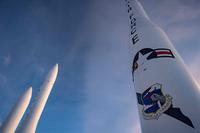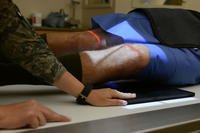The U.S. unemployment rate for veterans held steady in September at 3.6% amid the second consecutive month of poor job growth nationwide as the coronavirus and its Delta variant kept a grip on economic activity.
It marks only the second time since February 2020 that the veteran unemployment rate was below 4%, according to a monthly report from the Labor Department's Bureau of Labor Statistics released Friday.
But optimistic forecasts from market analysts for an increase in new veteran hires, possibly to 500,000, were dashed. Only 194,000 jobs were added to payrolls in September, down from the adjusted rate of 366,000 in August and 1.1 million in July.
More post-9/11 veterans reported unemployment, up to 3.5% from 3.1% last month, even as the overall U.S. unemployment rate dropped from 5.2% to 4.8% in September, BLS said.
Joblessness for those veterans was still well below the double-digit rates in the early days of the COVID-19 pandemic when it spiked to 11.7% in April 2020.
"These are still pretty good numbers," said Tom Porter, executive vice president of Iraq and Afghanistan Veterans of America. "The key problem here is the economy is inextricably linked to COVID. It's not really going to take off until we solve the pandemic."
Even so, the long-term outlook for veterans in the job market is showing improvement despite the pandemic and other factors, said Bryan Rollins, director of the Warriors to Work program at the Wounded Warrior Project.
"We still see growth. It's still basically a bull market," Rollins said.
He pointed to a 12% increase in the Wounded Warriors' job placement efforts over the past fiscal year. The number of veterans who found jobs through the program increased from 1,900 to 2,100.
Read Next: Independent Review of Afghanistan War Failures Gets Backing of Key Senator
The BLS data was compiled in mid-September, before indications of a downturn in the number of cases and hospitalizations from the Delta variant.
Other factors also may have played a part in suppressing an economic recovery, such as uncertainty over raising the federal debt ceiling, gridlock in Congress, the border crisis, natural disasters, and a chaotic Afghanistan withdrawal.
President Joe Biden said Friday that the BLS data for September was from mid-month and pointed to signs of an upturn, while he made another pitch for his proposed $1.5 trillion infrastructure bill and $3.5 trillion bill on a variety of social programs.
"Look, it's essential that we have to regain momentum we've lost," Biden said.
U.S. businesses were more pessimistic about the prospects for an economic recovery from Biden's plans, while economists said a recovery may already be underway.
"We are in the midst of a worker shortage crisis, and the number of potential workers is shrinking. Multi-trillion tax and spend proposals in Washington will only make matters worse," Neil Bradley, chief policy officer for the U.S. Chamber of Commerce, said in a statement.
Robert Frick, corporate economist for the Navy Federal Credit Union, said the BLS survey taken in mid-September did not track the downturn in the Delta variant wave in the second half of the month.
"There are indications that hiring is already accelerating, certainly in the last 10 days, and should accelerate through October," Frick said.
-- Richard Sisk can be reached at Richard.Sisk@Military.com.
Related: Veteran Unemployment Rates Drop Even as Job Growth Slows Amid Delta Variant Virus Surge














